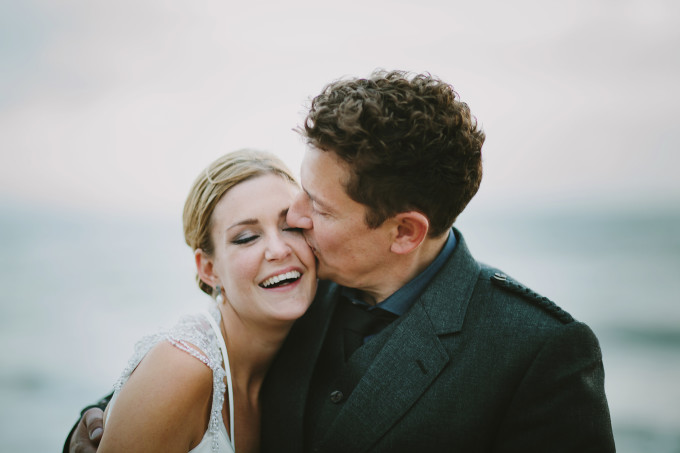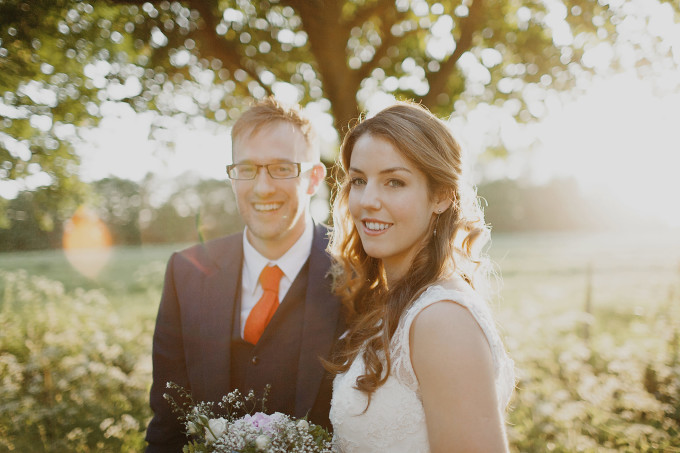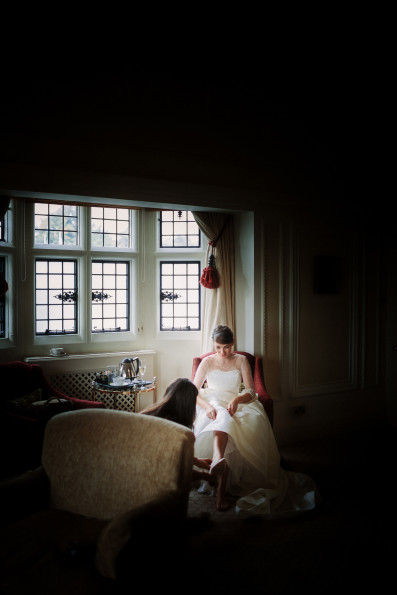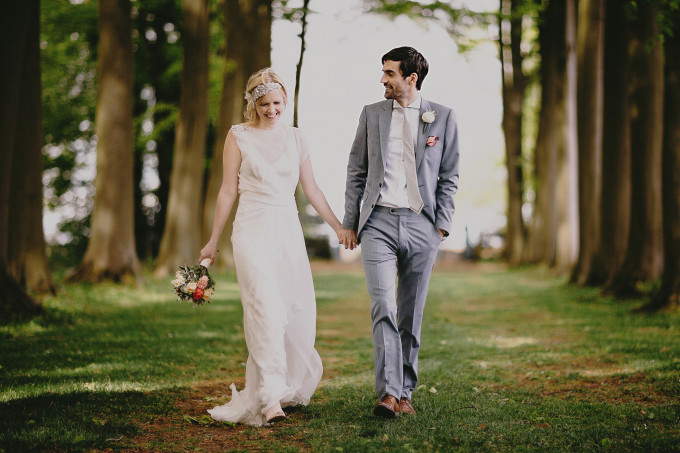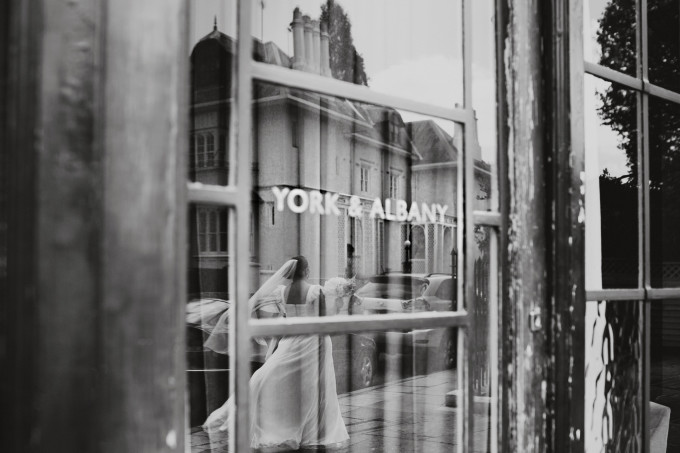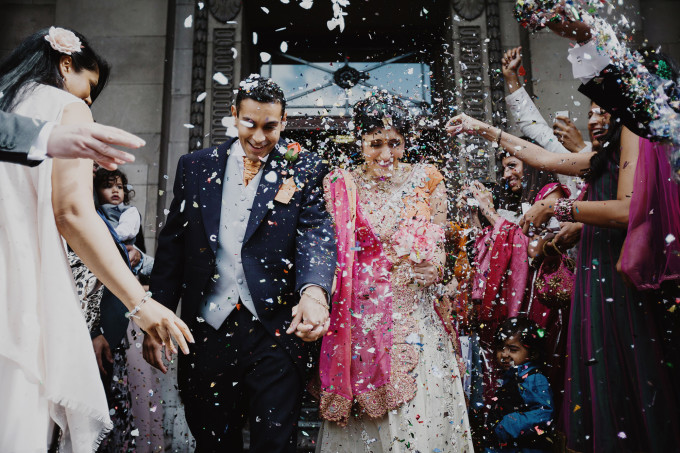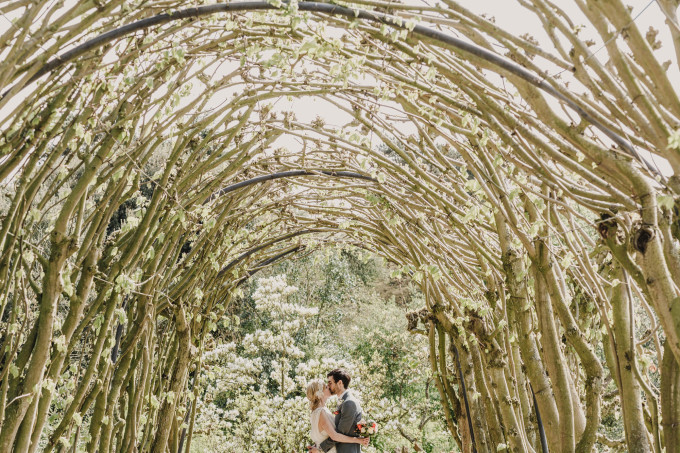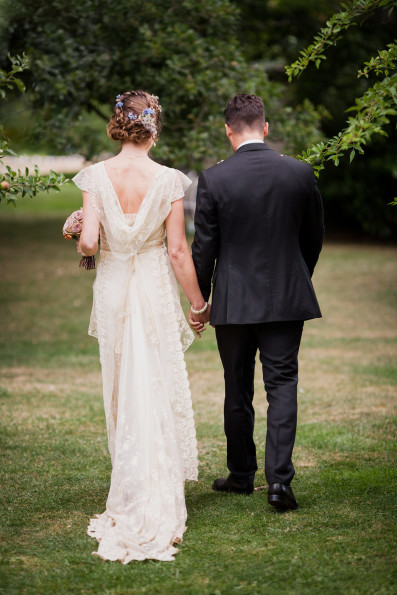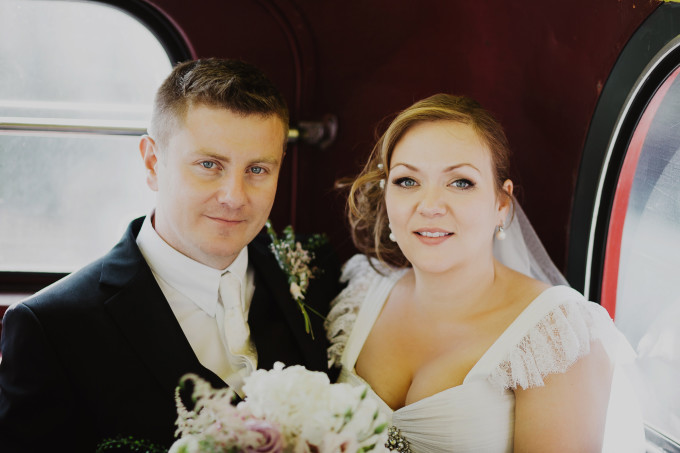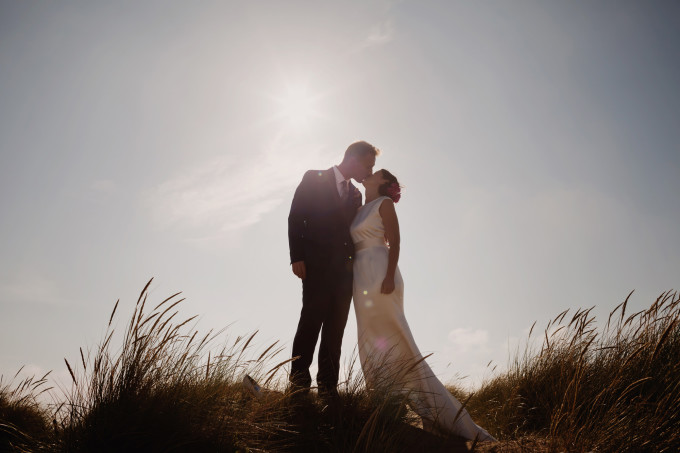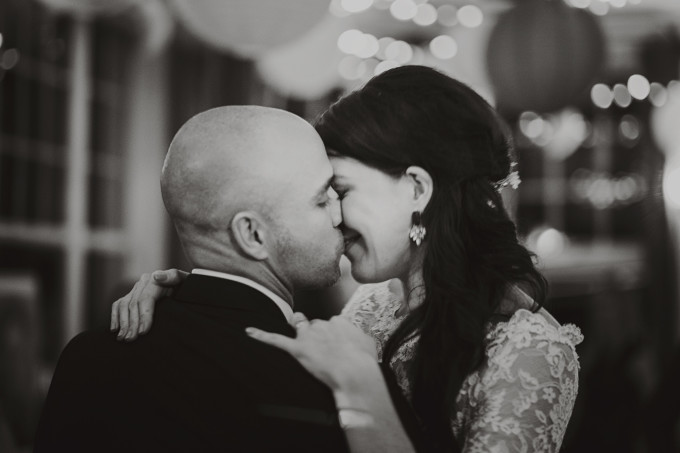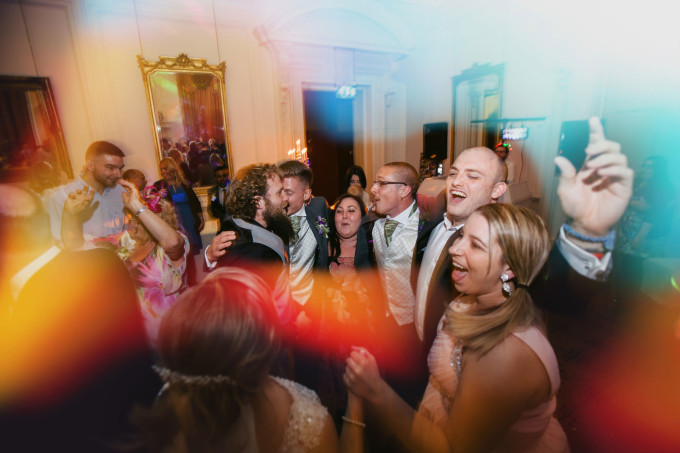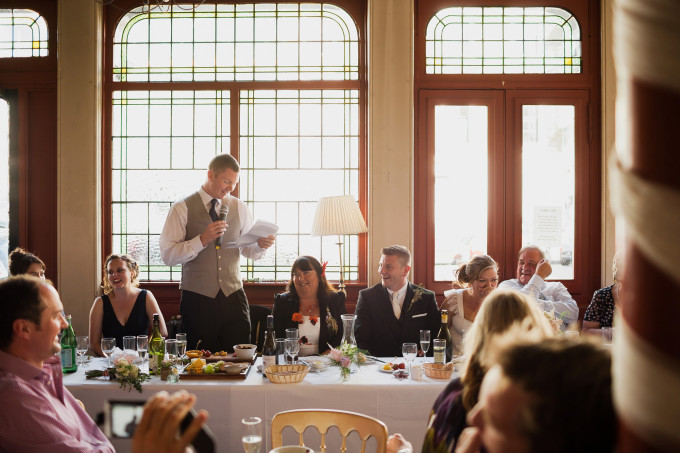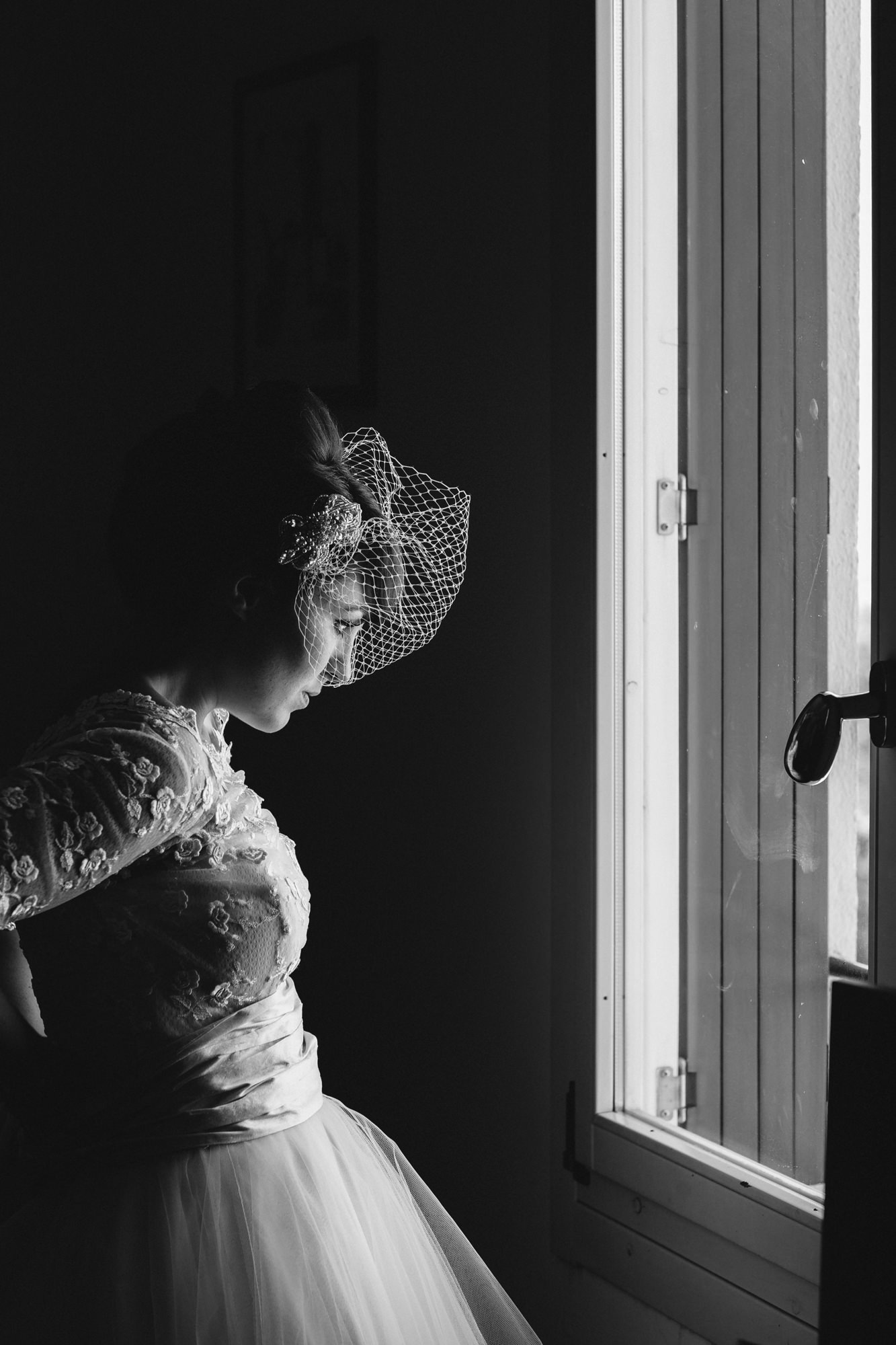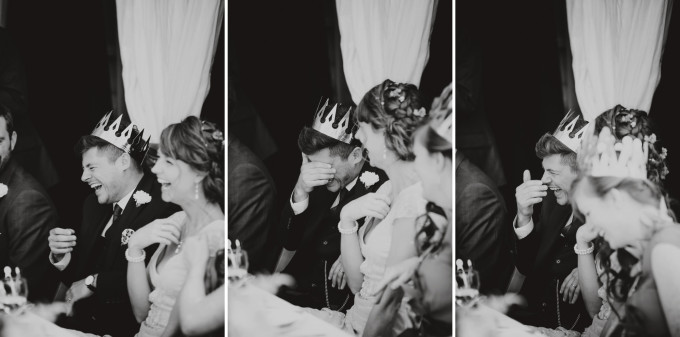All images by Fred and Jamie. Used with permission.
“Our shooting manifesto is photojournalistic. We don’t want to interfere or choreograph, we want to capture the feeling and personality of the day.” say photographers Fred and Jamie in their initial interview email to the Phoblographer. “We care more about a shot capturing a moment and evoking an emotion than getting sharp focus or finding the best lighting. I’d much rather see a photo that connects with the viewer than is executed technically well and we hope our clients do too.”
The duo have been shooting together since 2011, and care a lot about the emotion of the moment when it comes to their images. To that end, they see themselves as storytellers. “Having two photographers (as opposed to a photographer and an assistant) allows us to be in two different places at the same time. We sync our camera clocks and at the after the day, we order all our shots chronologically.”
Phoblographer: Talk to us about how you both got into photography.
Jamie: I first fell in love with photography at college in the 1990s. I acquired an old Pentax SLR and learnt how to develop my own films in the darkroom. Fred and I met at University (studying Graphic Design) and found we shared a common outlook and aesthetic sense when it came to art. we’ve been collaborating together on photographic projects and films ever since.
Fred: My Grandfather became a professional photographer after leaving the fire service back in the 80s. I learnt the basics on an Olympus OM2 that my grandfather gave my dad. Later I managed to get hold of a Nikon FM and an old Hasselblad that belonged to my grandfather, this was after he changed everything for digital. I used the camera more avidly throughout School and University where I studied Graphic Design. Despite being a design course I mainly did photography and film making.
Phoblographer: What made you want to get into weddings?
Jamie: I upgraded from my old Pentax film SLR to a DSLR about 10 years ago and soon became obsessed with my camera. I would photograph everything (using my old film lenses) and as social media was starting to take off, my friends would all see my photos. I started to get a reputation for being “the photographer”. Friends, impressed by my photos and struggling to finance their weddings, started asking me if I’d photograph their weddings. Meanwhile, Fred was experiencing the same thing. We both really enjoyed the experiences, and received much positive feedback. Word of mouth spread and we got more requests. People kept saying we should do it professionally to which we both first disregarded, but one evening we did a search online to look at wedding photographers and were quite shocked by some of the quality. This gave us confidence and we started up a Ltd. company and went into business.
Fred: Like Jamie says, we sort of fell into it really before deciding to market ourselves. We both have well established careers and weddings presented little self contained photographic projects, most usually taking place at weekends which could fit around our day jobs.
Jamie: I work professionally in London as a graphic designer and my clients are generally quite large and well-known companies so you end up dealing with teams of people who report to other teams of people. I like the personal balance that shooting weddings as a second vocation provides. There’s something very satisfying about doing something that means so much to someone personally. No matter how exhausting the wedding day was to shoot, when you get that first response from the couple, brimming with emotion, excitement and thanks, you remember why you do it. It’s what makes it worth doing.
Phoblographer: One of the biggest part of wedding photography has to do with the business behind it. How did you go about learning that part, realizing that you need to constantly bring in money, set budgets, etc?
Jamie: We’re in quite a unique position here in that we both have existing careers that we’re passionate about. As I said, I work as a graphic designer and have no plans to give that up. We limit ourselves to a maximum number of weddings a year and don’t take on jobs if we don’t feel the chemistry is right with the client. We provide a specific offer and if someone’s looking for something different, we will direct them elsewhere rather than try to second-guess what they want. It’s important for us to share a creative vision for the output with our clients. We’re in it for the love of doing it.
Fred: Well, whilst we love doing it, it is a business so getting paid what we feel is appropriate to what we offer is also pretty important. We are pretty careful not to over extend ourselves to compete with less expensive photographers and we are careful to try and cover all of our costs in addition to our own time.
Jamie: All we need is to earn each year is enough to pay our tax bill, overheads, accountant and purchase some new gear — anything else is a bonus. We are very lucky to have the luxury of being in this position.
Phoblographer: How much of your time is spent actually shooting vs meeting clients, marketing, blogging, editing, etc?
Jamie: We should probably blog more, really. If we relied on this income, we would spend a lot more time on marketing. Editing is what takes up the most time. It takes a whole day just to cut the shots from each wedding down to the 10% that best tell the story of the day. Meeting clients in person is important, but we find that people are quite easy going with when that can be so it’s easy for us to fit it around other times that are convenient to us.
Fred: Most of our time is spent photographing and editing. Its the priority for us. We still religiously do the shortlists together and we then might edit a few shots together and plan how we want to process them, we then take our respective images . We should spend more time on our social media, marketing and blogging but the time we set aside for this usually ends up in us messing about, being childish and going off on tangents. Our resolution for 2016 is to be more productive and write agendas!
Phoblographer: Where do your influences come from as far as a creative vision go? The images look very classically photojournalistic and some are very fashion inspired.
Jamie: Classic street photographers like Cartier-Bresson and travel documentarians like Steve McCurry really inspire us. We love capturing that moment; images that tell a story in themselves. We also like a lot of the more fine-art end of photography also really interests us. I love the work of people like Nan Goldin, Sally Mann and Wolfgang Tillmans, although I doubt this has much influence on our wedding photography. There are some people I just like the approach and passion of—even if maybe the final output is not really my thing. I love hearing wedding photographers like Joe Bussink speak. His enthusiasm, commitment and can-do attitude is infectious.
Phoblographer: So walk us through a typical client meeting. What do you feel is important for you guys to get answered to deliver the best services?
Jamie: I feel it’s vitally important to meet a couple before the wedding day. There’s a lot of psychological analysis involved. We need to work out what kind of people they are, what they will be comfortable with, what they want from the shoot, how to make them feel relaxed, what kind of sense of humour they have etc. For our style to work, we need the couple to act as if we weren’t there. If they tense up when we point a camera at them, we need to find a way to work around that. For this reason, every client meeting is different.
There are a few key questions we always ask:
– What will the day involve?
– What are the important events?
– Who are the important people?
– Is there anything you particularly want us to shoot?
– Is there anything you particularly don’t want us to shoot?
and the most important question of all: – Will you feed us?
We also always ask that they assign a helper to us who knows the families well. They need to be informed of their duties before the wedding day. This is so we bother the couple as little as possible on the day itself.
Fred: Our client meetings are always informal. They can be over a coffee or over dinner or drinks out. Whatever suits the couple really. We tend to just chat for a while to break the ice, usually talk is naturally about the wedding but not always. Then we make notes of any specific instructions, who people are, what are the family dynamics etc. We type this up and issue to the clients later and it forms our crib sheet for the day.
Jamie: Most couples tell us they’re not bothered about formal group shots, but we always try to persuade them to set aside a time in the day to do these. These are—of course—not for the couple themselves, but this isn’t something a lot of people realise. It’s not the couple who want the portrait of themselves with all the extended cousins from the groom’s side of the family, it’s the groom’s aunt and uncle’s mantlepiece that that shot is going on. If you don’t set aside time for these shots, you will be asked on the day by various family members and then it’ll be a nightmare trying to find everyone at an inopportune moment when maybe the good light has gone, uncle Frank is a bit too drunk and the younger kids are starting to get tired.
Fred: We do tend to advise a limit to the group shots though and we invest less time in “creative” set ups. We would much rather spend the time with the couple or capturing the event.
Phoblographer: What essential wedding photos do you guys try to get each wedding?
Jamie: That isn’t really our style. We try to tell the story of the day and every wedding is different.
Fred: We don’t really have any must haves other than those instructed by the client as important though we are always on the look out for certain scenarios such as golden hour for portraits etc.
Phoblographer: What are you guys doing to specifically market the creativite services you offer?
Jamie: Not as much as we should be! We have survived so far primarily by word of mouth. So far, our only technique is to try and do a good job. Although we’ve now started officially advertising these, we would provide the couple with a surprise additional video of a kind of stop-motion film of every single shot we took on the day running chronologically to music. These went down really well. I think adding little unexpected extras like these makes a client more inclined to talk to their friends about you.
Fred: Marketing is tricky and we haven’t really got a strategy that works for us yet. Being featured on blogs is difficult and the many listing sites generate lots of links or potential enquiries that aren’t really appropriate to what we do. We have so far been wary of investing in paid advertising as we weren’t sure over the last three years how this business would develop for us. Our word of mouth network has been really successful for many years as it brings couples to us who are already familiar with what we do. We get fewer inquiries but more chance of concerting them. That said we are now at the stage where we are going to need to expand this network. Since we began we have really tried to focus on honing what we do and that we deliver a quality service on time. The stop motion idea was Jamie’s. It works so well as a little extra the couple might not have been expecting. Combined with music the videos can be really emotive.
Phoblographer: What gear do you use? Why do you feel it’s best for you?
Jamie: We like DLSRs. We have a Canon 5D, 5Dmkii, 5Dmkiii and a 6D (you need at least two cameras each). We shoot with mainly prime lenses. I like primes because I feel they make me think about the shot more. We both love our 35mm lenses. There’s something magic about that focal length. I think it’s evocative of classic street photography and it places the viewer in the shot due to its slight wideness. As sharp and great as those massive, white L lenses at 200mm are, something intimate is lost in that distance for me. To each their own. It’s such a personal thing.
Fred: We looked at a few of our weddings one time and around 80% of all of our shots were using the 35mm or the 85mm prime lenses so safe to say these are our go to focal lengths. The newer cameras, Mkiii & 6d are pretty indispensable for their ISO performance. Low light or poor lighting is the enemy and capturing a ceremony is sometimes about damage limitation so the performance of the kit is critical and without these technological advances high quality coverage of every part of the day would be really difficult to deliver. The 5d mki is still hanging in there but will likely retire this year. It can’t compete with the other kit in the challenging low light scenarios but there is still such a nice quality to the images it produces. In addition to the cameras & lenses we carry speedlights which only really come out for the evening shots, we aren’t “fill flash” kinda guys! We also always have tripods, reflectors, flash stands, diffusers etc though these come out less often and only for portraits.
Phoblographer: How are you trying to grow your business in the next year?
Fred: Our plans aren’t to increase or grow the wedding business. Right now it’s fun and passionate, we get to do something we love and do that together as friends and creative collaborators which is often difficult with our respective jobs and families. We don’t want that to change which is why we limit the number of weddings we take on each year.
Jamie: Even now, I find the summer months can start to get a little too busy. I never want to be in a position where I’m rushing to get someone’s shots finished. I’m constantly aware of how important these shots are. These are the shots that will be shown to their great grandchildren one day. Although, saying that, we do want to expand into other areas of photography. We both love portraiture and are trying to pursue that a little more in addition to weddings.


